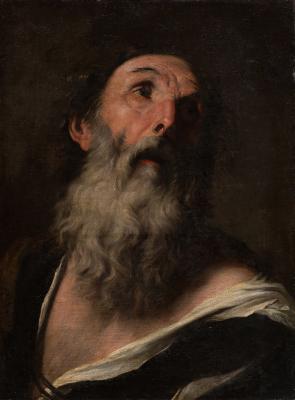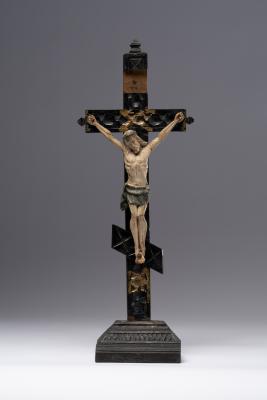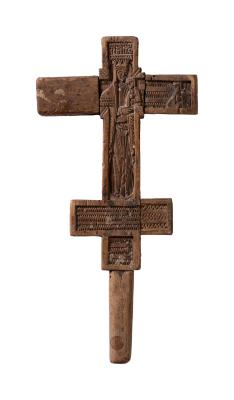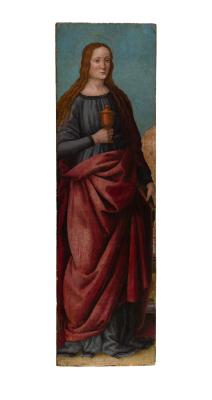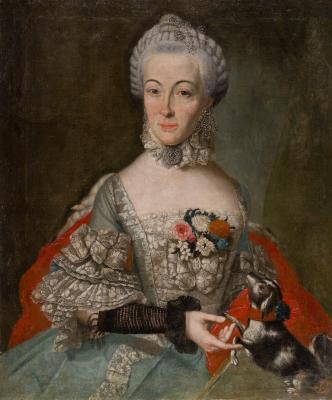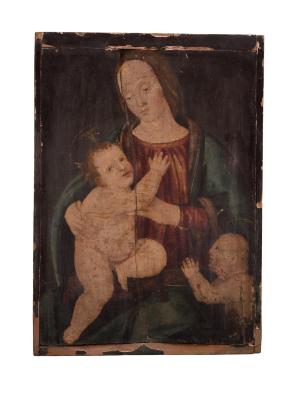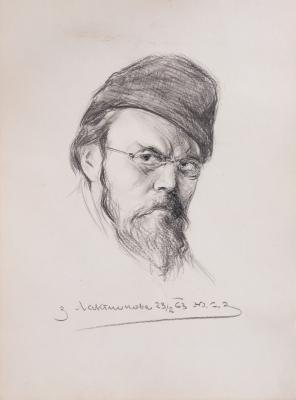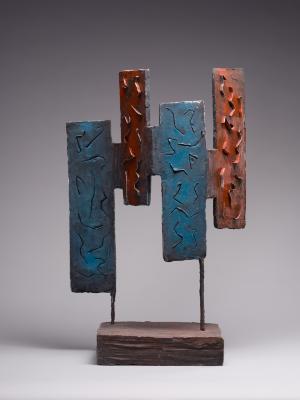Wind Rose (Sheet 8 from the Graphic Cycle "Jonathan Swift's Kingdom of Absurdity")
Alexander Aksinin
- ID
- Г-IV-3642
- Author
- Alexander Aksinin
- Name
- Wind Rose (Sheet 8 from the Graphic Cycle "Jonathan Swift's Kingdom of Absurdity")
- Date of creation
- 1978
- Technique
- etching
- Material
- imprint on paper
- Dimensions (height x width, cm)
- 29.7 x 29.3
- Type
- printmaking
- Provenance
- Purchased and kept in permanent storage,1983
This is the eighth sheet of 11 etchings from the graphic cycle "Jonathan Swift's Kingdom of Absurdity." The artist himself wrote down several names of his compositions in his diary. He named one of them "Wind Rose," which best corresponds to this etching.
In addition to "Gulliver's Travels", A. Aksinin was inspired by "A Tale of a Tub", J. Swift's first pamphlet written between 1694 and 1697. Chapter VIII of the Tale deals with the Aeolian philosophers (named after Aeolus, the Greek god of winds), who considered the wind to be the root cause of everything. Man, as it were, brings the crumbs of wind into existence. Priests of this doctrine often face the wind with their mouths open to eructate these crumbs for the good of mankind.
The artist depicted the settlement of priests in the form of a building resembling the Colosseum, with a maze inside of it, which unfolds from a scroll of the sheet, representing a fence composed of vertical boards. The facade of the unfolded building has three tiers. In the arches of the lower tier, there are greasy human tongues, which, in sequence, are either nailed down or holding the bowls, which are apparently filled with small pebbles from the air. Bowls with the same pebbles are present in the arches of the second tier; on the third tier, one can see the hung bells. The so-called Colosseum is separated from the outside world by a ditch and a high fence covered with sharp spikes. Similar spikes are visible on the wall boards scrolled inward. Both empty and filled buckets are installed at the top of the outer fence. Long poles with nets are stretched upwards from the spiral scroll walls, into which small pebbles fly with a gust of wind. Some nets have tongues; two tongues take rest, bending over the fence of the maze. One of the outer fence boards is broken open and thrown over the ditch like a bridge on which lies a dice. Through the hole in the place of the broken open board, one can see the water space with a sailboat on the horizon. From the bridge, a snail and a rabbit crawl towards the tongues along the plank road interspersed with pebbles. To the right of the "Colosseum" lurked a stag beetle, next to which is a diagonally written inscription A. AKSININ–1978. Small round pebbles fill almost the whole space of the composition; in particular, they are in the sky, on the vertical wall panels, and on the ground; they are also scattered on the tongues in the arches. The small elements of the images force the viewer to focus on specific details and try to enter into the mysterious world created by the artist. The author maximises the laconic composition of the work, in which a clear vertical rhythm is combined with the rotation of the spiral in the centre. Three diagonal poles at the top with oval objects hanging on them enrich the structural design of the work.
Imitating the compositional completeness and symbolic basic principles of Hieronymus Bosch and Pieter Bruegel the Elder, the Dutch artists of the 15th–16th centuries, A. Aksinin reflects, in Aesop's language, the reality of his time, which is filled with needless chatter, hare-brained plans, and absurd decisions.









